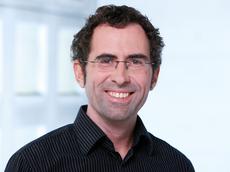Filming proteins in action
Roland Riek investigates protein structures, especially protein aggregates. He believes that we will be able to film proteins at atomic resolution in action in the future.

What do you consider to be chemistry’s greatest
achievement or most important discovery?
The identification of the three-dimensional
structures of proteins and the DNA double helix, which enabled discovery of the
functioning of proteins and DNA replication.
What fascinated you about chemistry?
The fact that the interaction of atoms with their electrons forms the
basis for life.
What do you focus on in your research and what
aspects of it are evident or usable in everyday life?
We
examine the three-dimensional structures and dynamics of proteins and link them
to how they work. In particular, we study protein aggregations that are
associated with neurodegenerative diseases such as Alzheimer’s or Parkinson’s, and
with normal cellular activities such as the storage of hormones in the
pituitary gland.
How will your field of research develop? Where
does its potential lie?
Structural biology
will develop to such an extent that we will be able to “film” a protein in
action – and possibly even in living organisms, at that. As for protein
aggregation, on the one hand we will be able to understand neurodegenerative
diseases on a molecular and atomic level and successfully develop medication to
treat them. On the other hand, protein aggregation will find its way into
nanotechnology.
What concept from chemistry should everyone
know by the end of the International Year of Chemistry and why?
The term “atom” because matter consists of atoms and, as I mentioned, the
interaction between atoms forms the basis of life.
About the person
Roland
Riek is a professor of physical chemistry and heads the Bio-Nuclear Magnetic
Resonance Group at ETH Zurich’s Laboratory of Physical Chemistry. He studied
physics at ETH Zurich and did his PhD thesis under Professor Kurt Wüthrich at
the Institute of Molecular Biology and Biophysics.







READER COMMENTS